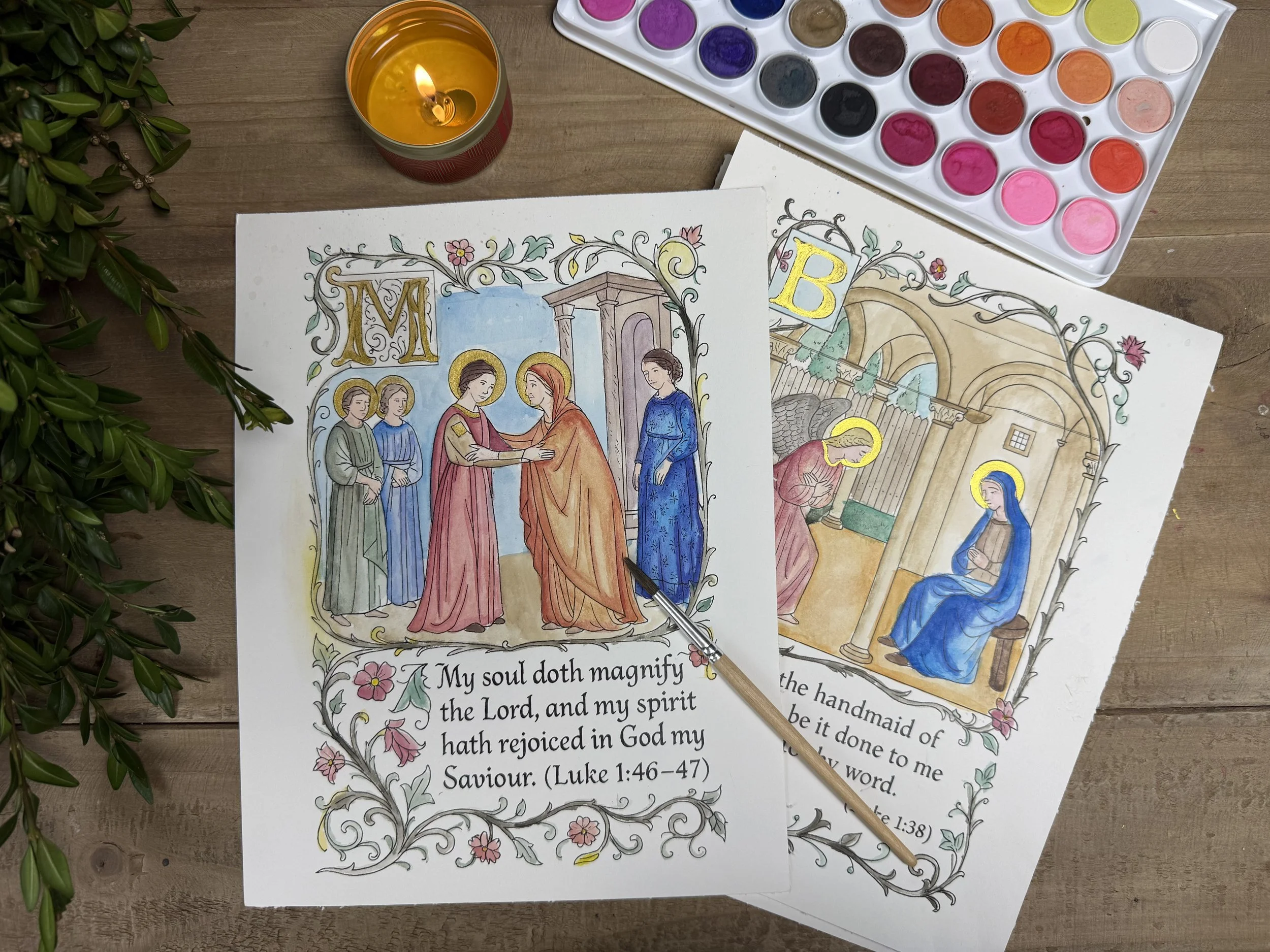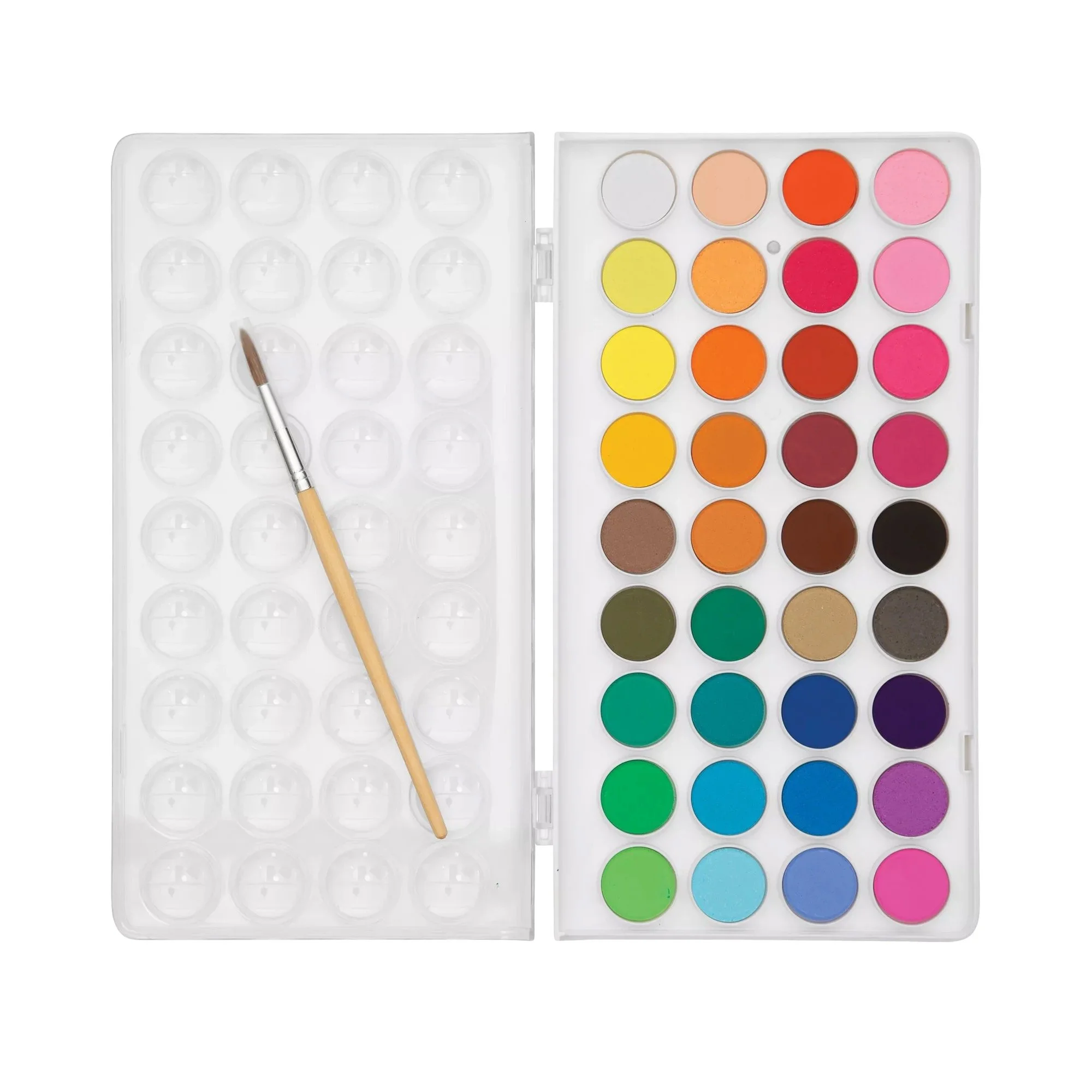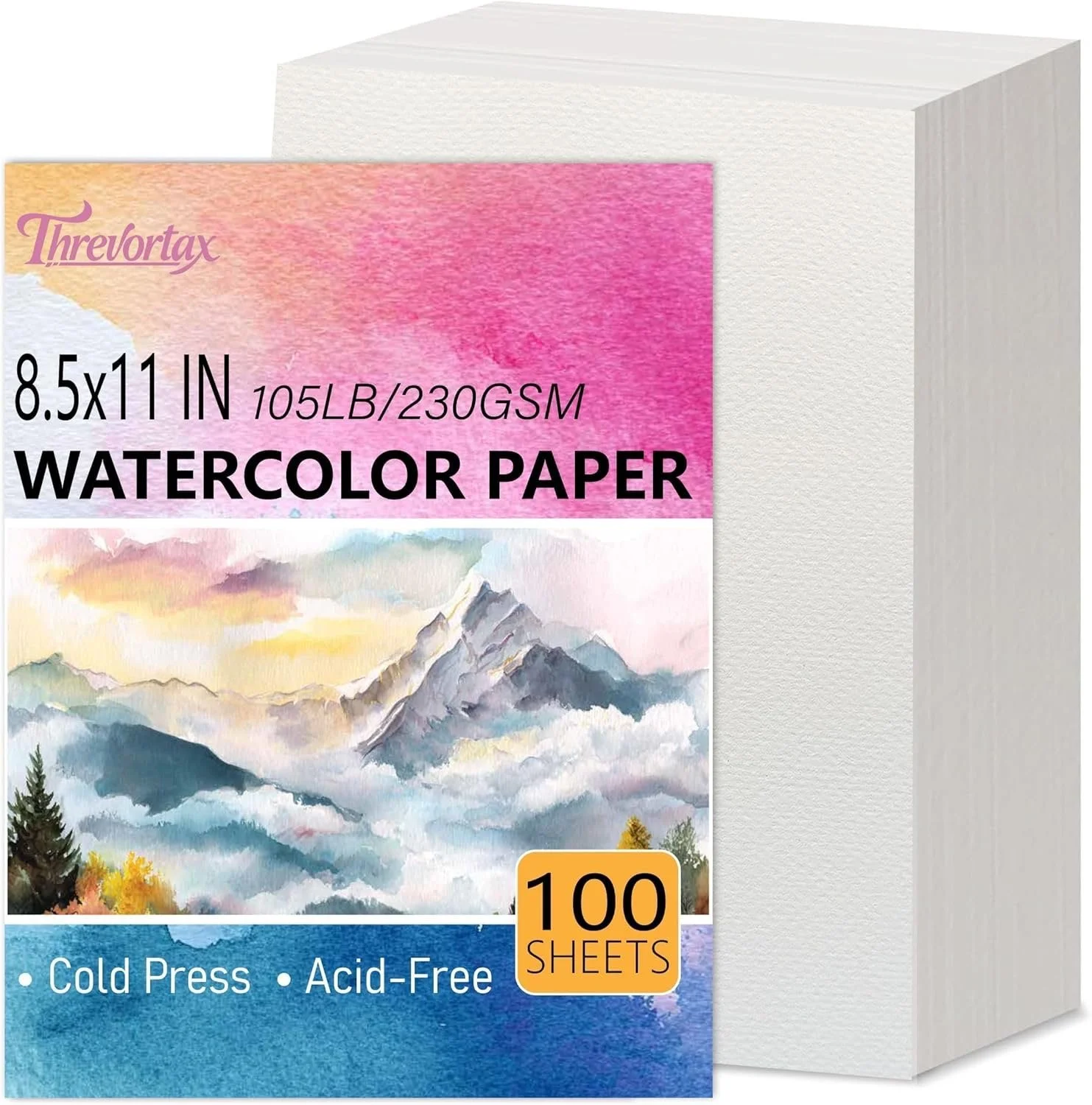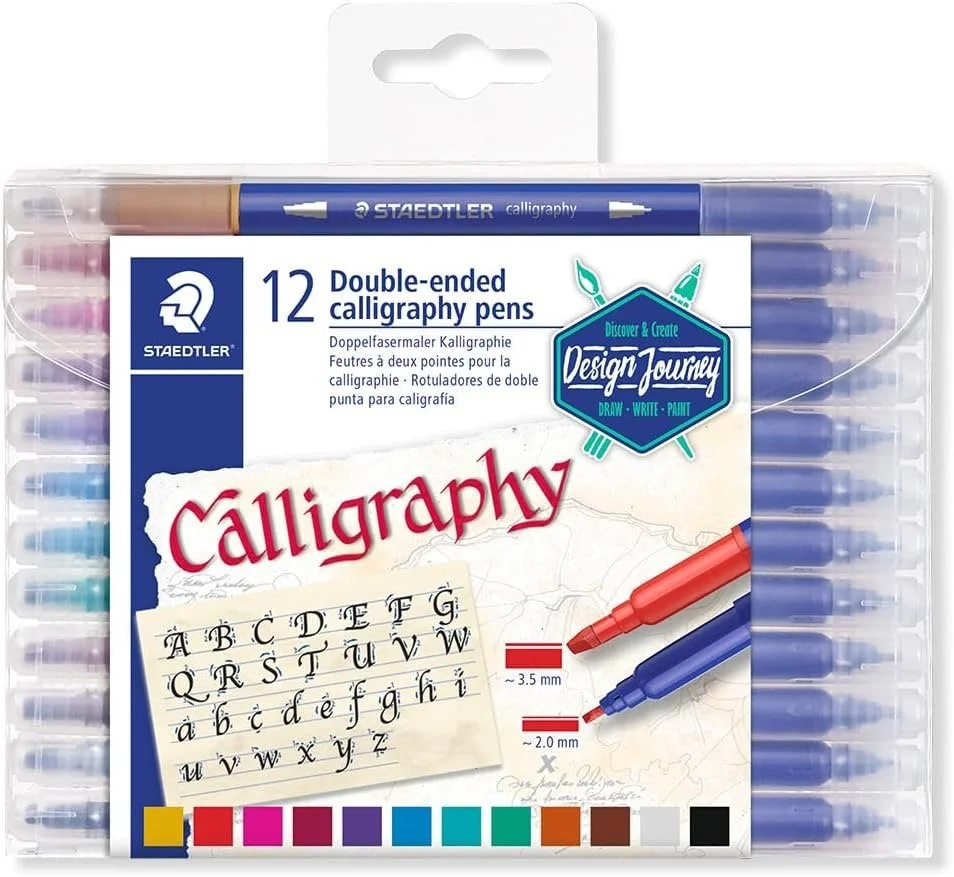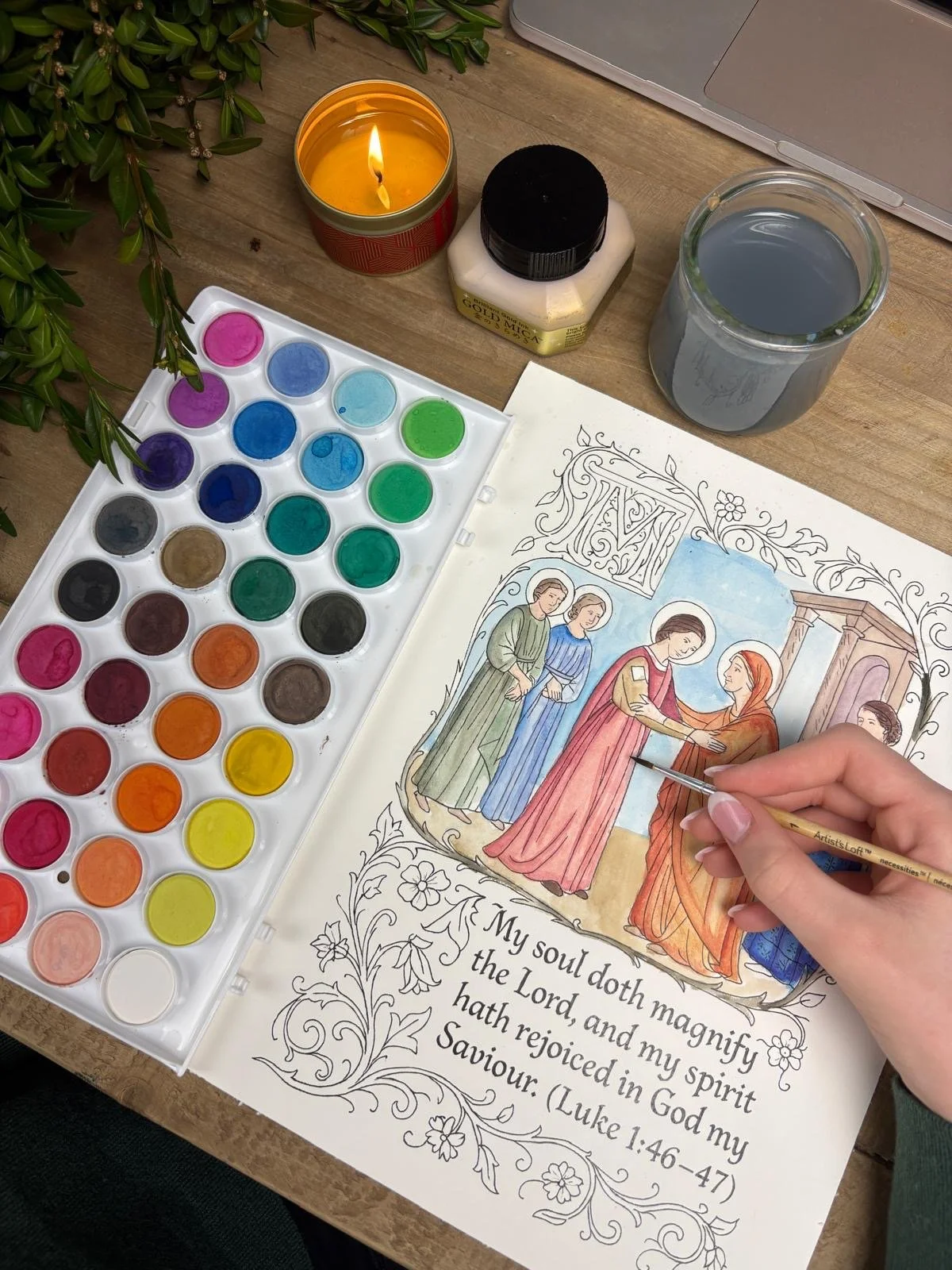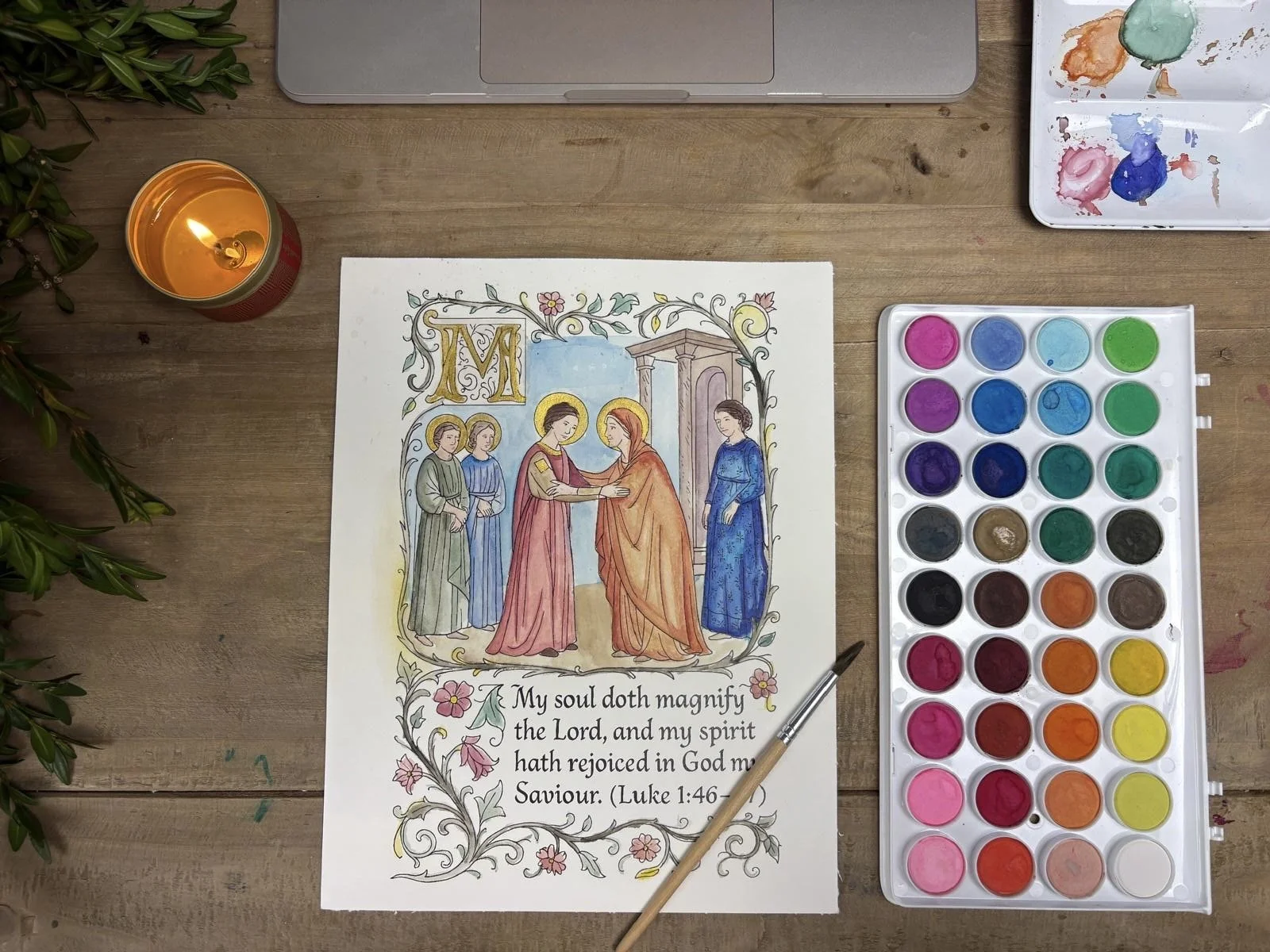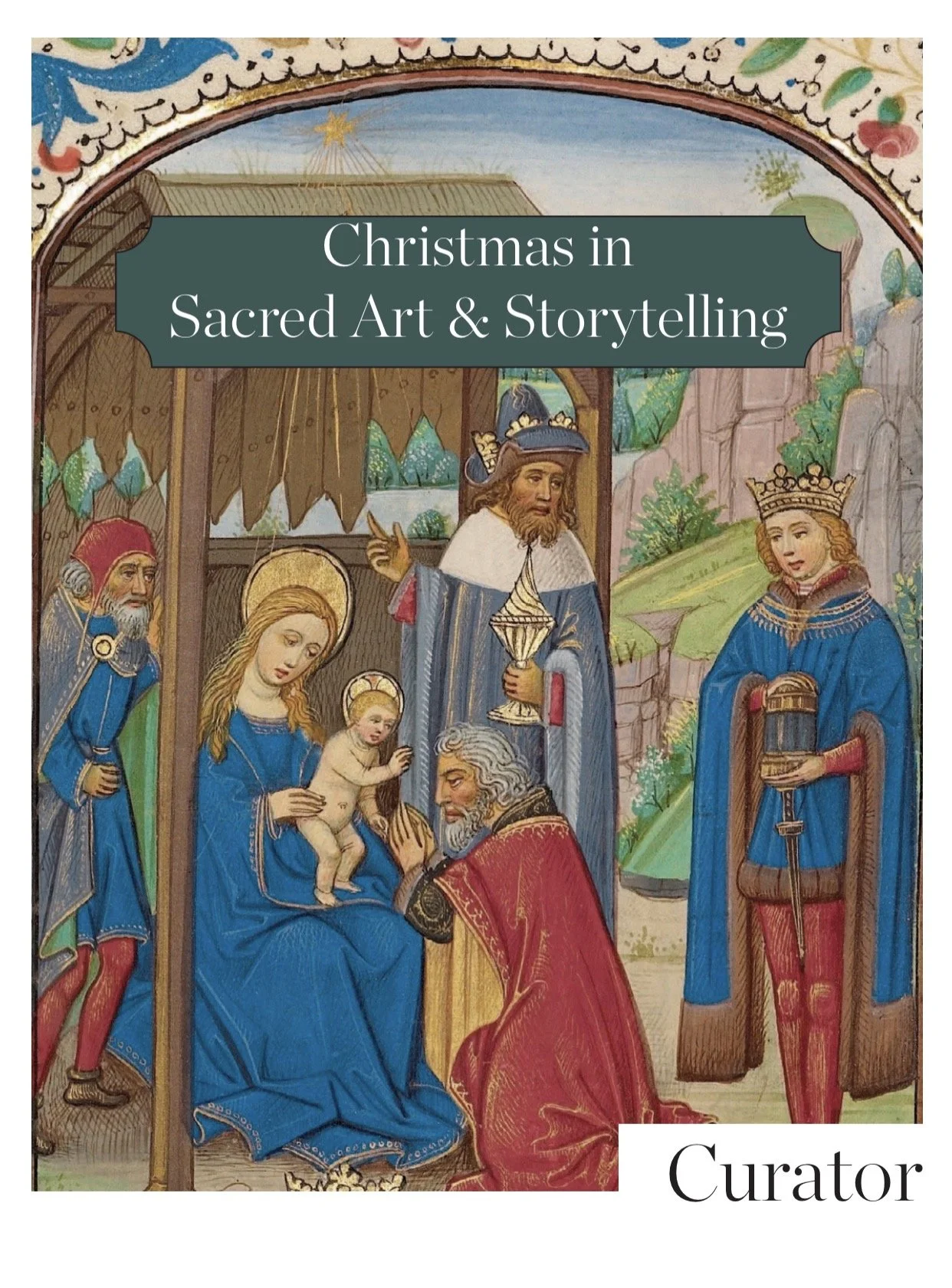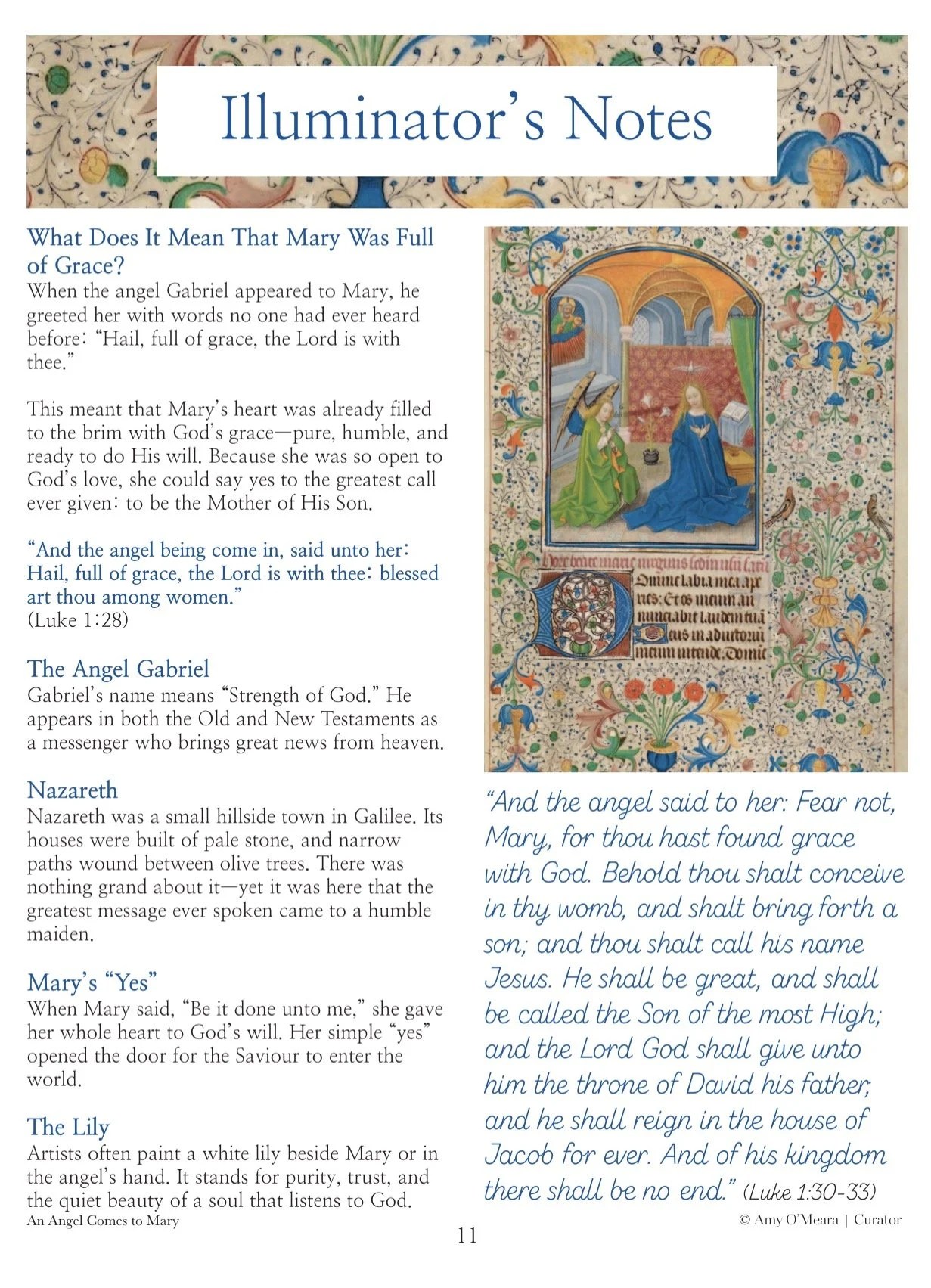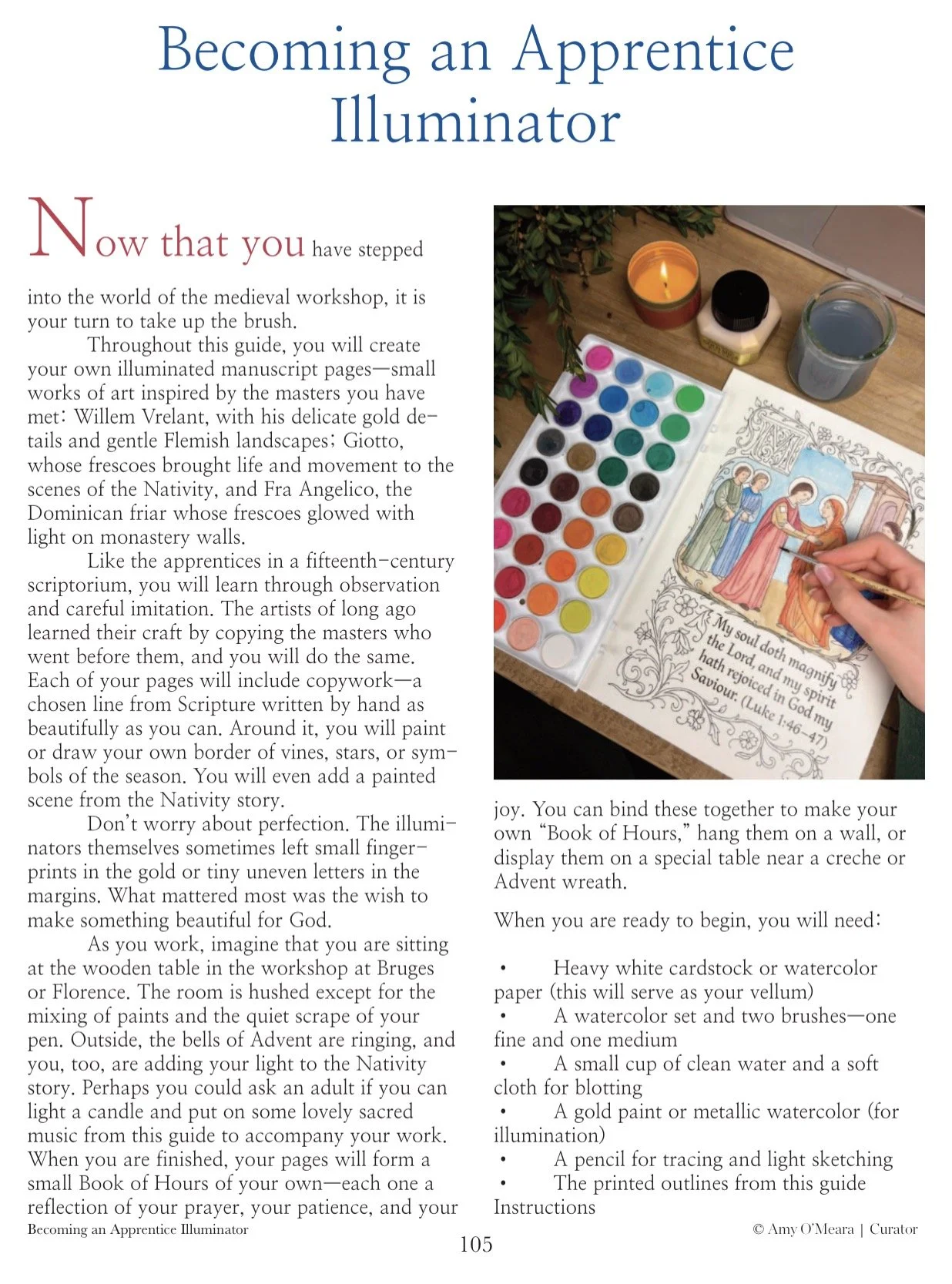How to create your own illuminated manuscript
This post contains Amazon affiliate links from which I earn a small commission on qualifying purchases
Light a candle, put on some lovely music, and take up your brush- it’s time to become an apprentice illuminator. Rather than vellum, gold leaf and ground pigments and a quill pen dipped in oak gall ink, you’ll be using the modern equivalents of watercolor paints, luminous gold ink and calligraphy pens in vibrant colors. to create your pages. Here are all the supplies we recommend for creating your own illuminated manuscript:
Create your own beautiful illuminated manuscript pages with watercolors, gold ink and calligraphy pens
Recommended supplies
These four supplies are all you need to begin making your own beautiful illuminated manuscripts at home.
Watercolor Pan (36 colors)
We looked for a watercolor pan that was easy to use but also had depth of color so your child can create realistic illuminations. The hues in this palette are sophisticated and reminiscent of the soft, earthy colors found in the frescoes of Fra Angelico and Giotto. This set also includes a paintbrush.
Brilliant Gold Ink Gold Mica
After testing numerous different gold pens, gold watercolors, gold inks, this was hands-down the very best. The gold mica ink spreads very evenly and easily, and creates an absolutely beautiful luster that is very similar to real gold leaf.
Cold Press Watercolor Paper
These individual sheets of watercolor paper are perfect for putting through your printer to print out the outlines for your illuminated manuscripts. There’s 100 sheets in here so it’ll last you a long time for multiple projects. They are sized 8.5” x 11” and are 105lbs weight.
Calligraphy Pens
This set of calligraphy pens has 12 colors (including black and sepia) which is ideal for creating realistic illuminated manuscript text. They are double ended (2 tips for narrow and broad strokes), acid free and the colors are beautiful.
An illuminated manuscript page has a painted image, an illuminated border and beautiful hand lettering.
Become an Apprentice Illuminator
Choose the theme for your manuscript
You can make an illuminated manuscript of any theme you’d like. Traditionally, they were for a.“Book of Hours” that contained prayers and Scripture passages. You can also do an illuminated page based on a favorite poem, a passage from your favorite book, or to accompany your own creative writing. Your illuminated page should include the following three elements:
Painted Image
Each illuminated page should feature a central image, usually hand-drawn and carefully painted with layers of luminous watercolors.
Illuminated Border
An illuminated manuscript page traditionally includes a border featuring vines, flowers, birds, animals and symbols. These are a mixture of painted elements, touched with gold finishes to make them shine.
Lettering
Lettering was done using a quill pen dipped in oak gall. You can create a similar effect using calligraphy pens, choosing the “Sepia” color for an authentic finish. Try your hand at copying traditional Gothic style script, or use your very best handwriting.
Traditionally, illuminated manuscripts contained prayers and Scripture passages
Step-by-Step Instructions to create your own illuminated manuscript page
You will need:
· Heavy white cardstock or watercolor paper (this will serve as your vellum)
· A watercolor set and two brushes—one fine and one medium
· A small cup of clean water and a soft cloth for blotting
· A gold paint or metallic watercolor (for illumination)
· A pencil for tracing and light sketching
· The printed outlines from this guide
Instructions
Step 1: Prepare Your Page
Find a quiet space with good light. You can tape your cardstock to the table so it stays flat as you paint.
Step 2: Trace or Print Your Design
“Christmas in Sacred Art & Storytelling” comes with 4 illuminated manuscript page outlines that you can print out on your watercolor paper and begin painting, without needing to do your own drawing. . For more advanced technique you can trace from these outlines using a pencil, and add your own embellishments. If you’d prefer, you can draw your own scenes and illuminated borders, inspired by masterworks. Choose the method you are most comfortable with.
Step 3: Begin the Painting
When you are ready to start painting, start with the lightest colors first, just as the illuminators did. Use gentle washes of watercolor to build up soft layers—sky blues, warm golds, gentle greens. Let each color dry before adding the next.
Step 4: Add the Gold
When your colors are dry, take up your gold paint. Use it for halos, stars, or borders. Work slowly. The illuminators called this “laying the gold.”
Step 5: Copywork and Borders
At the bottom or along the sides of your page, copy a chosen line from Scripture, a carol, or a prayer written in your neatest handwriting or in a calligraphy style. Around your picture and text, you may design a border—perhaps vines, stars, flowers, or small symbols. Painted in bright colors and touched with gold, were called illuminated borders because they seemed to glow with light.
Step 6: Finishing Touches
When your painting is dry, carefully remove the tape. Hold it to the light—see how the gold catches and flickers, just as it did in the pages of the old Books of Hours. You can frame your page to hang on a wall, or create multiple illuminated pages and bind them together in your very own illuminated manuscript.
Discover more inside our online course “Christmas in Sacred Art & Storytelling”
Bring your hearts closer to the beautiful mystery of the Christmas Story with “Christmas in Sacred Art & Storytelling” - a 25-day guided journey through Advent for the whole family. Short, 20 minute lessons will fill your days with beauty as you read aloud engaging stories, listen to sacred music, admire beautiful artworks, and create your own illuminated manuscript pages.
This fully immersive online course features audio recordings, video art tutorials, and full-color pdf downloads. Ideal for ages 6-16.

